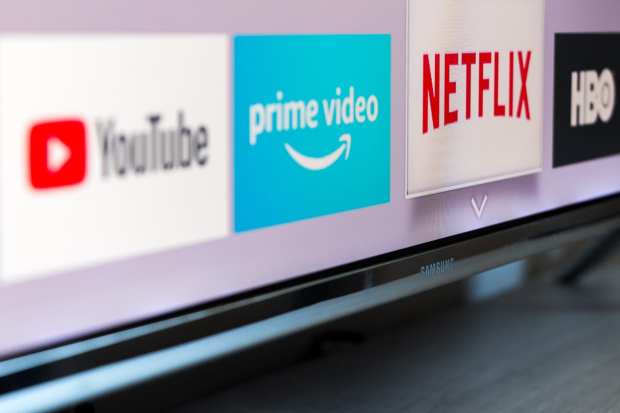In The Subscription Economy, Retention Is The New Growth

As more and more businesses go digital, is it time for subscription bundles to take center stage? Sharath Dorbala, CEO of subscription-management firm Vindicia, tells Karen Webster that subscription services are moving toward tailored, bundled models that ideally create a sense of belonging – and ecosystems of sticky relationships. Here’s how.
You likely remember the days when you got your Sunday paper in printed form, before clicking links on your devices, before getting content in your email inbox thrice daily.
Back then, you paid the subscription price and got a 12-inch stack of paper, replete with sections you never really read that closely. But you paid for the “bundle” anyway, because there was no other way to read the sections you really wanted to read.
In an interview with Karen Webster, Sharath Dorbala, CEO of Vindicia, a subscription management platform, said that subscription services are moving toward tailored, bundled models that, ideally, craft a sense of belonging — and create ecosystems of sticky relationships.
For companies of all types, he said, the challenge remains: “Everyone is focused on customer acquisition. But once you’ve done a good job, how do you keep them, and keep delivering constant value to them?”
The conversation came against a backdrop where subscription commerce — across any number of verticals – has seen a heady rise in demand. As many as a third of subscription-focused companies are seeing a rise in demand amid the pandemic.
The coronavirus has helped foster the evolution of different models that seek to boost customer engagement. Services such as Netflix or food delivery companies like Grubhub or the Ubers of the world have their millions of users, but keep them by adding services.
The switching costs can be low in a given vertical. Take ride-hailing, for example. Many people, Dorbala remarked, have both the Uber and Lyft apps on their phones, and pivot from one to the other depending on which service will get them to where they want to go the quickest. And Webster related an anecdote of acquaintances who were able to eat for free for months by switching across several free trials of meal delivery plans.
Thus, while platforms and subscription companies are, in Dorbala’s words, “aggregating eyeballs,” customers can and will vote with their feet.
But by using data, and with intelligent means of analyzing that data, companies can layer in new offerings that make it harder to switch.
“Netflix has kind of cracked the code,” said Dorbala. “It’s not just that they stream movies. It’s that when you log in, you know what others are watching, and what’s trending — and ‘what’s for you.’ That didn’t happen overnight. Pretty quickly, they realized that subscription is about retention. If you actually understand your customer better and use subscription intelligence, that will start helping them to curate content or services.”
There’s precedence here, of course. Long ago, telecoms found the shift to tiered subscriptions necessary, as wireless took root and number portability and different data plans became staples.
In terms of retaining customers, data matters. Said Dorbala, “It’s hard to start with curation that has no subscription intelligence … it just cannot be done.”
The Rise Of The Bundle
For companies that offer a range of content across, say, streaming video or music, the rise of the subscription bundle may seem like a hallmark of the digital age. But go back to those Sunday mornings with the doorstep papers — we’ve been here before.
The only difference, said Dorbala, is that in the past, traditional bundles were tied to contracts — and consumers got a lot of stuff they didn’t necessarily want. It was also expensive to end contracts early.
“But now, if you look at the whole bundle concept, even the big folks, the Apples and Amazons of the world, have come up with organic bundles,” said Dorbala. The aggregators have also become prominent — aggregating, of course, other firms’ services.
That leaves traditional subscription providers — the one jockeying for the proverbial eyeballs without putting bundling efforts in place — in the middle. Dorbala noted that subscription firms may layer on new services and layers of engagement, sending notifications to users who aren’t using what’s on offer, letting them know that they’re not (fully) taking advantage of what they’ve paid for. Food delivery services can (and do) offer discounts on subsequent purchases, in a bid to keep users active. But brand loyalty may prove elusive — Dorbala pointed to “subscription fatigue” that drives customers away and elevates churn.
“Those companies need to look at adjacencies and complementary offers,” said Dorbala. Health and wellness companies can conceivably pair with, say, Jenny Craig or Zumba Fitness — via apps, perhaps — to offer new bundles and comprehensive packages that share subscriber bases.
Sharing those bases can effectively broaden audiences and turn consumers into loyal subscribers. Bridging the gap between consumer/subscriber to create a feeling of affinity, and of belonging to an ecosystem, can be achieved by offering a discount for a subscription bundle (Apple is only the latest marquee tech name to do so).
“You need to create those bundles that are complementary and meaningful,” Dorbala said of subscription firms, noting that the rise of the bundle and the membership mindset is a “process the industry will have to go through.”
For firms seeking to have subscribers feel less like consumers and more like members, as he told Webster: “If you really want to win in this field, use the data, use the intelligence, use the insights — and start building your retention strategies. Retention is the new growth.”
